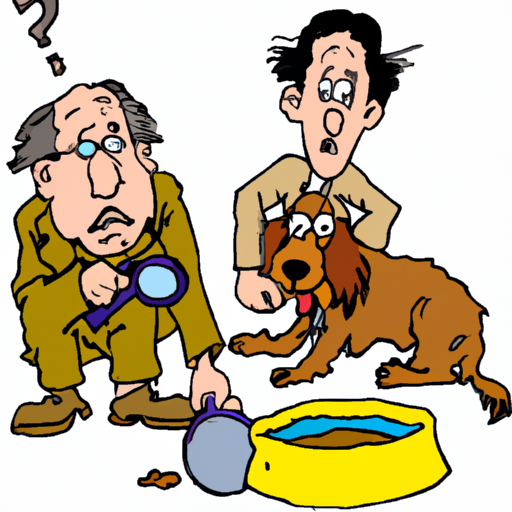As a caregiver, your dog’s health is of utmost importance to you. When your furry friend throws up yellow, it can be incredibly alarming and you may find yourself asking, “What does this mean?” Let’s dive into the details together.
H2 1: Understanding Vomiting in Dogs
Vomiting in dogs is not uncommon. Unlike humans, dogs have a relatively sensitive digestive system, making them prone to occasional bouts of vomiting. However, the color, frequency, and associated symptoms can help determine whether it’s a mild upset stomach or something much more serious.
-
Yellow Vomit: Often indicates bile, a digestive fluid that’s produced in the liver and stored in the gallbladder. It usually means the dog’s stomach is empty.
-
Other Colors: Brown, white, or clear vomit may suggest different issues.
| Vomit Color | Possible Cause |
|---|---|
| Yellow | Bile |
| Brown | Eaten food |
| White | Foam or mucus |
| Clear | Saliva or water |
H2 2: Why is My Dog Throwing Up Yellow Bile?
When you see your dog throwing up yellow, it’s typically bile. Bile helps in the digestion and absorption of fats in the diet. When your dog’s stomach is empty, bile can sometimes be thrown up. This is often seen in dogs that are fed once a day, and is more common in the morning or late night.
H2 3: When Should I be Worried?
While occasional yellow vomit isn’t usually a cause for concern, you should watch out for the following symptoms:
- Frequent vomiting
- Blood in vomit
- Accompanied by diarrhea
- Loss of appetite
- Lethargy
If your dog shows any of these signs, it’s time to take them to the vet.
H2 4: How Can I Prevent My Dog from Throwing Up Yellow Bile?
Preventing yellow vomit often involves simple tweaks in your dog’s feeding schedule or diet.
- Increase Meal Frequency: Instead of one large meal, try smaller meals spread throughout the day.
- Nighttime Snack: A small snack before bed can help keep the stomach from becoming too empty overnight.
- Diet Adjustments: Speak with your vet about possible diet changes.
H2 5: What Treatment Options are Available?
Treatment depends on the underlying cause. For mild cases, adjusting the diet and feeding schedule may suffice. For more serious conditions, your vet may recommend further diagnostic tests and treatments.
FAQ
Q: Is yellow vomit a sign of a serious illness?
A: Not necessarily. Occasional yellow vomit can simply indicate an empty stomach. However, frequent yellow vomiting accompanied by other symptoms like diarrhoea, loss of appetite, or lethargy can signal a serious health condition.
Q: Should I feed my dog after they vomit?
A: It’s usually best to give your dog’s stomach a break for a few hours after vomiting. If vomiting stops, you can reintroduce small amounts of bland food.
Q: What can I give my dog for vomiting bile?
A: It’s important to consult with your vet before giving any medication. They may suggest a dietary change or specific medication depending on the cause.
Remember, when in doubt, always consult with a veterinarian. Your proactive approach as a caregiver can make all the difference in your dog’s health and happiness.



